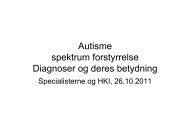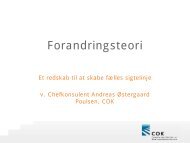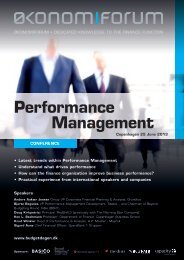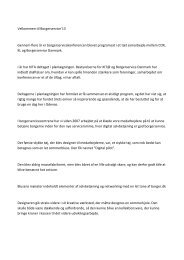Clusters are individuals - VDI/VDE-IT
Clusters are individuals - VDI/VDE-IT
Clusters are individuals - VDI/VDE-IT
You also want an ePaper? Increase the reach of your titles
YUMPU automatically turns print PDFs into web optimized ePapers that Google loves.
2.3.4 THE CHARACTERISTICS OF A CLUSTER DEPEND ON<br />
THE TECHNOLOGY FIELD <strong>IT</strong> IS OPERATING IN<br />
The characteristics of a cluster depend very much on the<br />
technology field it is operating in. Figure 15 displays structural<br />
characteristics of clusters from six different technology<br />
fields. The different structural characteristics reflect the characteristics<br />
of their industry sectors or technology fields. For<br />
example, biotechnology clusters <strong>are</strong> less oriented towards<br />
industries as still today biotechnology is very much driven<br />
by research institutions and universities. Other examples for<br />
specific industry characteristics <strong>are</strong> the industry sectors of<br />
energy and environment as well as micro, nano and optic.<br />
<strong>Clusters</strong> in these industries <strong>are</strong> not highly specialized as they<br />
work on technologies that can also be applied in various<br />
other industries.<br />
Impact<br />
on internationalisation<br />
activities of SME<br />
Impact on business<br />
activities of SME<br />
Private<br />
financing rate<br />
150,0<br />
125,0<br />
100,0<br />
75,0<br />
50,0<br />
25,0<br />
0,0<br />
Biotechnology & health<br />
Production & processes<br />
Energy and enviroment<br />
Percentage of<br />
median value (%)<br />
Sh<strong>are</strong> of clusters<br />
having initiated many<br />
successful co-operations<br />
Impact on R&D<br />
activities of SME<br />
Age<br />
Service and non-technical<br />
innovations<br />
ICT<br />
Sh<strong>are</strong> of clusters<br />
with highly clarity<br />
of tasks & roles<br />
175,0<br />
150,0<br />
125,0<br />
100,0<br />
75,0<br />
Percentage of<br />
median value (%)<br />
Sh<strong>are</strong> of highly<br />
specialised clusters<br />
Figure 16: Impact and private funding of clusters in different technology<br />
<strong>are</strong>as<br />
Micro & Nano & Optic<br />
Sh<strong>are</strong> of clusters<br />
with highly centralised<br />
governance structure<br />
50,0<br />
25,0<br />
0,0<br />
Numbers of<br />
members<br />
These findings demonstrate that the industry or technology<br />
field in which a cluster operates in has an important effect<br />
both on the structural characteristics of a cluster and the<br />
performance of a cluster management organization. This is<br />
an important conclusion for the development of future cluster<br />
programs. In order to support clusters according to their<br />
specific needs cluster programs have to take the specific<br />
technology foci of clusters into account.<br />
Figure 15: Structural characteristics of clusters in different technology<br />
fields<br />
Sh<strong>are</strong> of clusters<br />
with a high Industrial<br />
orientation<br />
Biotechnology & health<br />
Production & processes<br />
Energy and enviroment<br />
Service and non-technical<br />
innovations<br />
ICT<br />
Micro & Nano & Optic<br />
There <strong>are</strong> also huge differences between clusters in different<br />
technology <strong>are</strong>as when it comes to the impact of the work of<br />
the cluster management organization and the sh<strong>are</strong> of private<br />
funding of the cluster management organization (see<br />
Figure 16).<br />
2.3.5 CLUSTERS W<strong>IT</strong>H A HIGH IMPACT ON BUSINESS<br />
ACTIV<strong>IT</strong>IES OF SME FEATURE AN ACTIVE CLUSTER<br />
MANAGEMENT<br />
A cluster management organization can influence the development<br />
of a cluster through the provision of targeted services for<br />
its members (see Box 2 for an overview of services). The analysis<br />
of the benchmarking results has demonstrated that the more active<br />
a cluster management is in this regard, the higher its impact<br />
on the development of business activities of cluster members<br />
is. This was in detail analyzed for SME members by calculating a<br />
composite indicator for business-oriented services provided by<br />
the cluster management organization that was put in relation<br />
with the impact of the work of the cluster management organization<br />
on business activities of SME.<br />
Figure 17 displays a correlation between the spectrum and intensity<br />
(in terms of frequency) of business-oriented services and<br />
the impact of the work of the cluster management organization<br />
on business activities of SME. The more services <strong>are</strong> provided<br />
(see e.g. the median value), the higher the impact on business<br />
activities of SME is.<br />
28

















